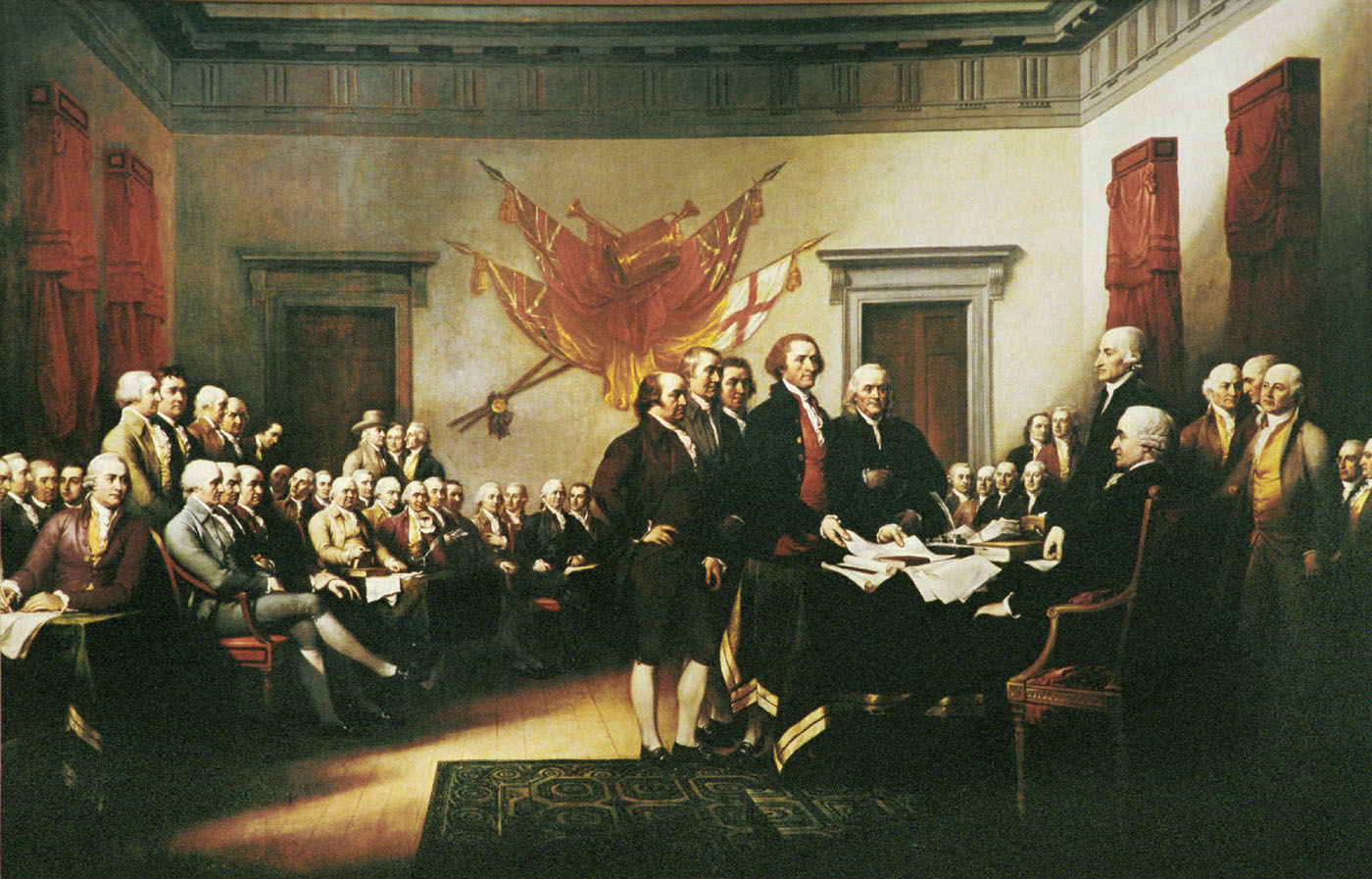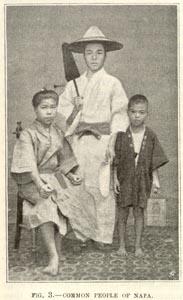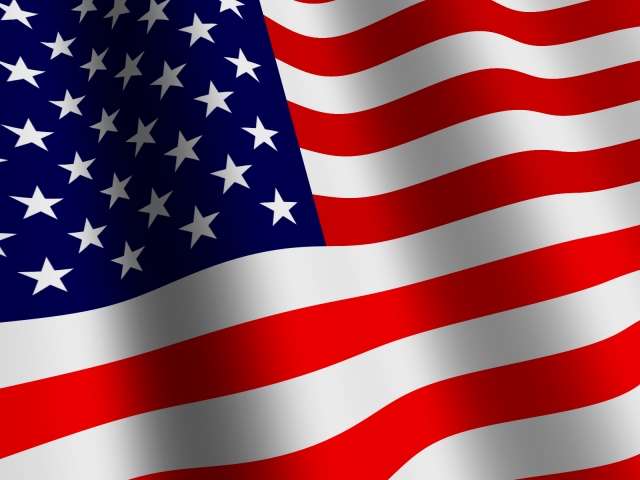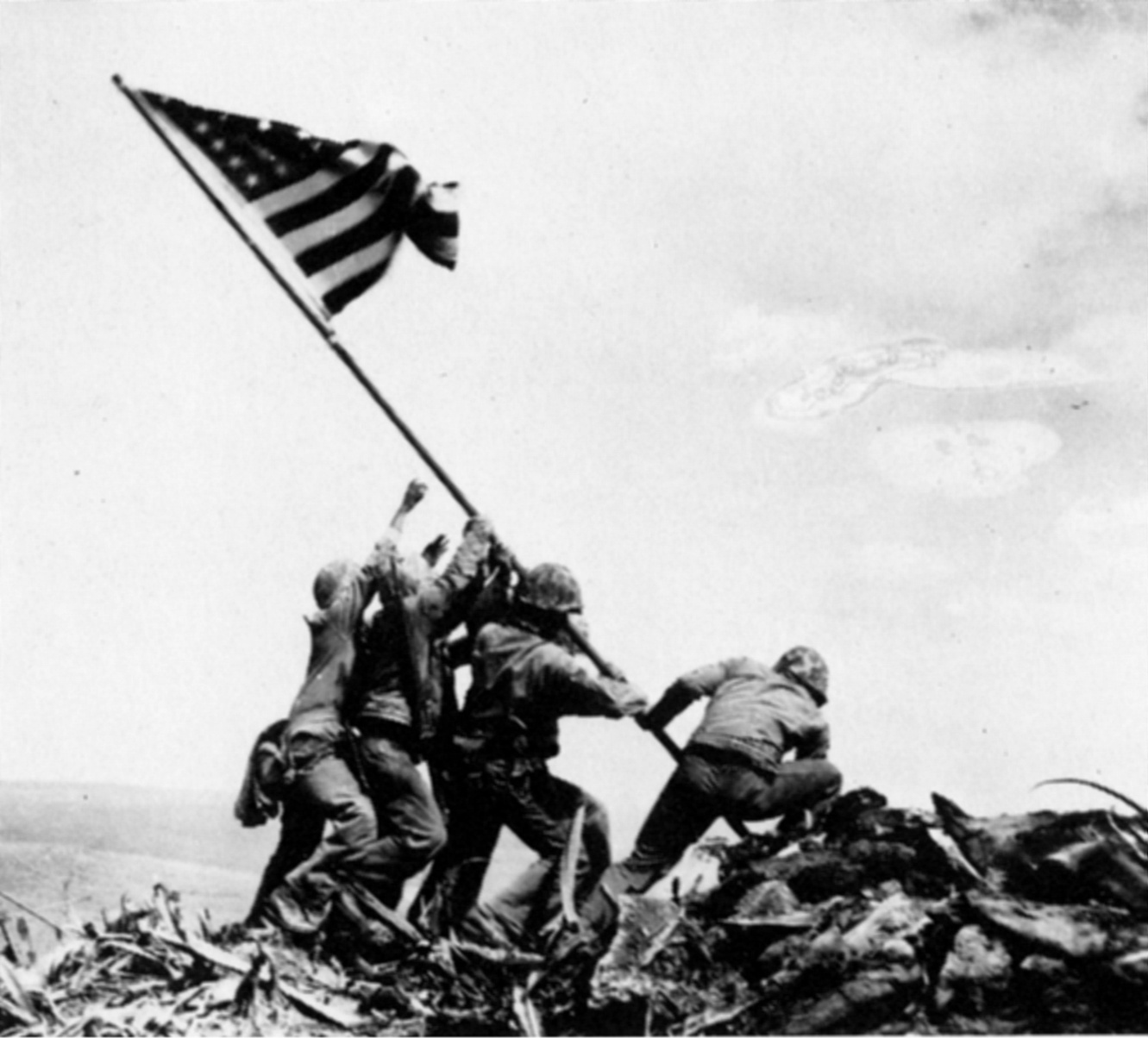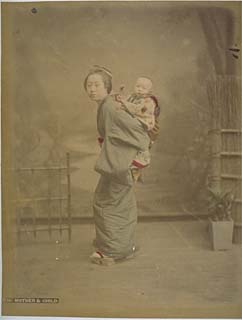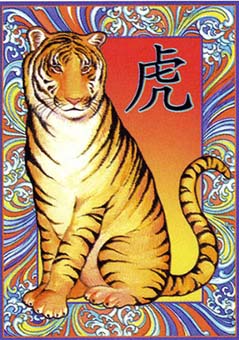
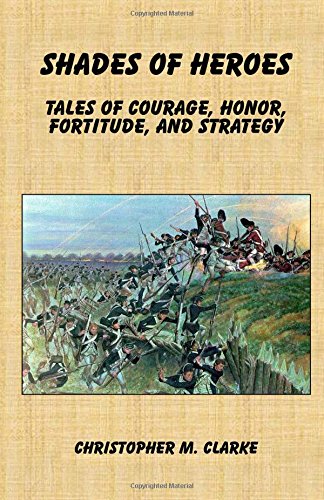 Beisho is pleased to announce the latest publication by Papa Chris Clarke, "Shades of Heroes: Tales of Courage, Honor, Fortitude, and Strategy"
Beisho is pleased to announce the latest publication by Papa Chris Clarke, "Shades of Heroes: Tales of Courage, Honor, Fortitude, and Strategy" 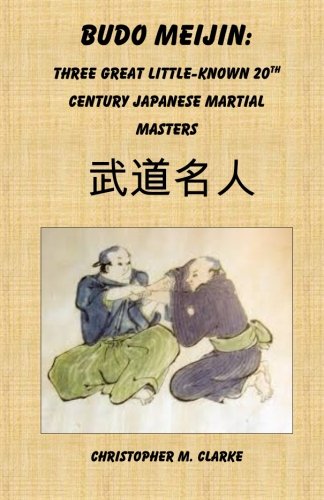 Beisho is pleased to announce the publication of the latest book on martial arts history by Papa Chris:
Beisho is pleased to announce the publication of the latest book on martial arts history by Papa Chris: We are happy to announce Papa Chris's latest book:
We are happy to announce Papa Chris's latest book:

 Beisho is sad to note the passing of the "father of Canadian karate," Masami Tsuruoka (January 12, 1929-October 10, 2014). Born in British Columbia, Tsuruoka was interned with his family during World War II. After the war, Tsuruoka moved with his father to Japan and at age seventeen began the study of Chito-ryu karate in Kumamoto, under Dr. Tsuyoshi Chitose (1898-1984), an Okinawan student of Aragaki Seisho, Kiyan Chotoku, Hanashiro Chomo, Motobu Choyu, and bo master Chinen Sanda. Tsuruoka received his first degree black belt at age twenty, and after continuing his study and receiving his third degree black belt, moved back to Canada in 1956. In 1958, he opened what was reputed to be the first karate dojo in Canada. In 1962, Tsuruoka organized the first karate tournament in Canada and in the same year was recognized by Chitose as Chief Representative of Chito-ryu karate in Canada. From the 1960s on, Tsuruoka was a fixture on the tournament scene in Canada and the US as a referee and judge. In 1979, he stepped down from his position as director of the Canadian Chito-kai and founded his own organization, the Tsuruoka Karate-do Federation. In May 1998, Tsuruoka received the Order of Ontario for his contributions to the martial arts, and in May 2006, was promoted to 10th dan by the Canadian National Karate Association.
Beisho is sad to note the passing of the "father of Canadian karate," Masami Tsuruoka (January 12, 1929-October 10, 2014). Born in British Columbia, Tsuruoka was interned with his family during World War II. After the war, Tsuruoka moved with his father to Japan and at age seventeen began the study of Chito-ryu karate in Kumamoto, under Dr. Tsuyoshi Chitose (1898-1984), an Okinawan student of Aragaki Seisho, Kiyan Chotoku, Hanashiro Chomo, Motobu Choyu, and bo master Chinen Sanda. Tsuruoka received his first degree black belt at age twenty, and after continuing his study and receiving his third degree black belt, moved back to Canada in 1956. In 1958, he opened what was reputed to be the first karate dojo in Canada. In 1962, Tsuruoka organized the first karate tournament in Canada and in the same year was recognized by Chitose as Chief Representative of Chito-ryu karate in Canada. From the 1960s on, Tsuruoka was a fixture on the tournament scene in Canada and the US as a referee and judge. In 1979, he stepped down from his position as director of the Canadian Chito-kai and founded his own organization, the Tsuruoka Karate-do Federation. In May 1998, Tsuruoka received the Order of Ontario for his contributions to the martial arts, and in May 2006, was promoted to 10th dan by the Canadian National Karate Association.
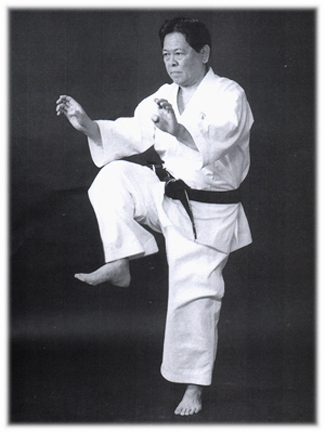 Beisho is sad to acknowledge the passing of Shohei-ryu (Uechi-ryu) Hanshi Takamiyagi Shigeru, 10th dan at the age of 79. A mainstay for many years of the Uechi-ryu community, a highly respected teacher and technician, and one of Okinawan karate's premier historians, Takamiyagi Sensei passed away on October 17. Takamiyagi had trained for some 57 years and in 2012 was named a "Person of Exceptional Cultural Merit" by Okinawa Prefecture. A student of Uechi Kanei, the son of the founder of Uechi-ryu, Takamiyagi ran a dojo in Chatan for many years and was an officer of the OKIKUKAI (Okinawan Karatedo Association).
Beisho is sad to acknowledge the passing of Shohei-ryu (Uechi-ryu) Hanshi Takamiyagi Shigeru, 10th dan at the age of 79. A mainstay for many years of the Uechi-ryu community, a highly respected teacher and technician, and one of Okinawan karate's premier historians, Takamiyagi Sensei passed away on October 17. Takamiyagi had trained for some 57 years and in 2012 was named a "Person of Exceptional Cultural Merit" by Okinawa Prefecture. A student of Uechi Kanei, the son of the founder of Uechi-ryu, Takamiyagi ran a dojo in Chatan for many years and was an officer of the OKIKUKAI (Okinawan Karatedo Association).
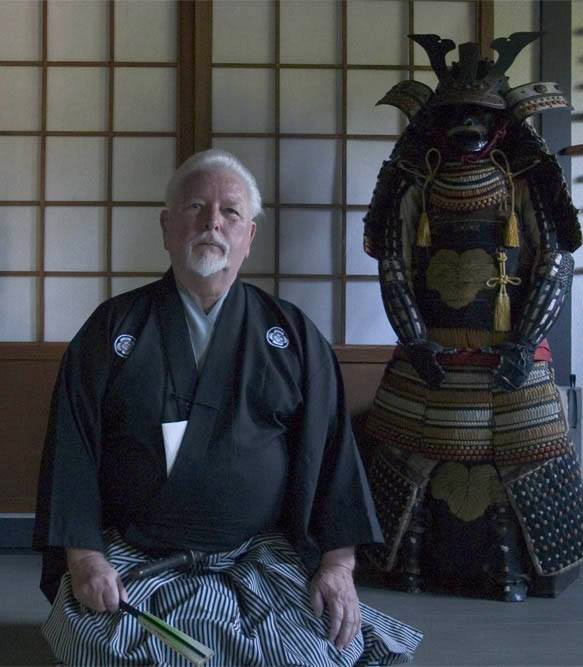 Beisho is sad to report the death of Don Angier, a well-known martial artist and teacher of Yanagi-ryu Jujutsu. Click here to read an autobiographical article on Angier Sensei's remarkable career, posted on the Aikido Journal website. A number of videos of Angier can be found on youtube at https://www.youtube.com/playlist?list=PL5F6395C625D38186.
Beisho is sad to report the death of Don Angier, a well-known martial artist and teacher of Yanagi-ryu Jujutsu. Click here to read an autobiographical article on Angier Sensei's remarkable career, posted on the Aikido Journal website. A number of videos of Angier can be found on youtube at https://www.youtube.com/playlist?list=PL5F6395C625D38186.
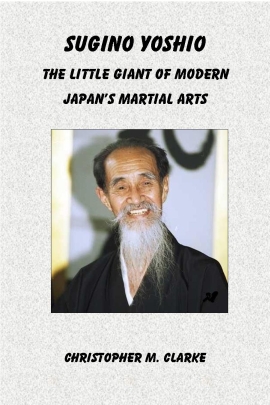 Beisho is pleased to announce the latest publication by Papa Chris Clarke, "Sugino Yoshio: The Little Giant of Modern Japan's Martial Arts." Sugino (December 12, 1904-June 13, 1998) was one of - if not the - most accomplished, widely and deeply trained martial artists of the 20th century. A top student of kenjutsu, judo, aikido and numerous classical weapons, he was also one of the most beloved and respected budo masters in Japan. Yet his story is barely known in the West. He quickly became a judo champion, opening a dojo with Master Kano Jigoro's approval at the age of only 22, undoubtedly one of the youngest people Kano ever sanctioned to teach on his own. At Kano's suggestion, Sugino took up studying one of the few remaining classical jujutsu styles, eventually reaching kyoshi level. At about the same time, and also at Kano's recommendation, he began training in Tenshin Shoden Katori Shinto-ryu, one of the few surviving truly ancient styles of hyogo (the arts of war), which included a huge curriculum of weapons, unarmed combat, military strategy and other subjects. Not yet content that he had plumbed the depths of Japanese budo, at the age of 27, he enrolled as a student of Ueshiba Morihei, the founder of Aikido and a well-known and widely respected martial artist. For the next 60 years, Sugino was a fixture on the Japanese martial arts stage, teaching in a number of locations, training uchi deshi (live-in pupils), and often being called on to demonstrate his art at major national venues. He may best be remembered, however, for having choreographed the weaponry fighting scenes for several of the classic movie collaborations between Director Akira Kurosawa and actor Toshiro Mifune, including the famous duel against seven opponents in the 1956 movie, The Seven Samurai. Sugino lived during a unique time, at the tail-end of the old, traditional, and secretive era of martial arts and the beginning of a new, modern, popularized era. Somehow, through the nature of his personality, his dedication, and his skill, he was able to straddle these two eras and help bring the old koryu into modern times. Such an era will never come again; no one else will have the opportunity he and a handful of other martial artists had to span these epochs. Nor are we likely again soon to see the combination of skill, dedication, versatility, and personality represented by Hanshi Sugino Yoshio (1904-1998). This booklet is available on Amazon.com: http://www.amazon.com/Sugino-Yoshio-Little-Modern-Martial/dp/1502418029/ref=sr_1_1?s=books&ie=UTF8&qid=1411904694&sr=1-1&keywords=Sugino+Yoshio. (78 pages, $6.29).
Beisho is pleased to announce the latest publication by Papa Chris Clarke, "Sugino Yoshio: The Little Giant of Modern Japan's Martial Arts." Sugino (December 12, 1904-June 13, 1998) was one of - if not the - most accomplished, widely and deeply trained martial artists of the 20th century. A top student of kenjutsu, judo, aikido and numerous classical weapons, he was also one of the most beloved and respected budo masters in Japan. Yet his story is barely known in the West. He quickly became a judo champion, opening a dojo with Master Kano Jigoro's approval at the age of only 22, undoubtedly one of the youngest people Kano ever sanctioned to teach on his own. At Kano's suggestion, Sugino took up studying one of the few remaining classical jujutsu styles, eventually reaching kyoshi level. At about the same time, and also at Kano's recommendation, he began training in Tenshin Shoden Katori Shinto-ryu, one of the few surviving truly ancient styles of hyogo (the arts of war), which included a huge curriculum of weapons, unarmed combat, military strategy and other subjects. Not yet content that he had plumbed the depths of Japanese budo, at the age of 27, he enrolled as a student of Ueshiba Morihei, the founder of Aikido and a well-known and widely respected martial artist. For the next 60 years, Sugino was a fixture on the Japanese martial arts stage, teaching in a number of locations, training uchi deshi (live-in pupils), and often being called on to demonstrate his art at major national venues. He may best be remembered, however, for having choreographed the weaponry fighting scenes for several of the classic movie collaborations between Director Akira Kurosawa and actor Toshiro Mifune, including the famous duel against seven opponents in the 1956 movie, The Seven Samurai. Sugino lived during a unique time, at the tail-end of the old, traditional, and secretive era of martial arts and the beginning of a new, modern, popularized era. Somehow, through the nature of his personality, his dedication, and his skill, he was able to straddle these two eras and help bring the old koryu into modern times. Such an era will never come again; no one else will have the opportunity he and a handful of other martial artists had to span these epochs. Nor are we likely again soon to see the combination of skill, dedication, versatility, and personality represented by Hanshi Sugino Yoshio (1904-1998). This booklet is available on Amazon.com: http://www.amazon.com/Sugino-Yoshio-Little-Modern-Martial/dp/1502418029/ref=sr_1_1?s=books&ie=UTF8&qid=1411904694&sr=1-1&keywords=Sugino+Yoshio. (78 pages, $6.29).

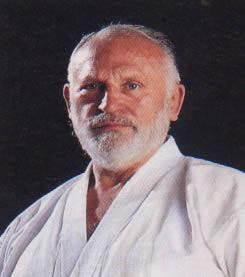

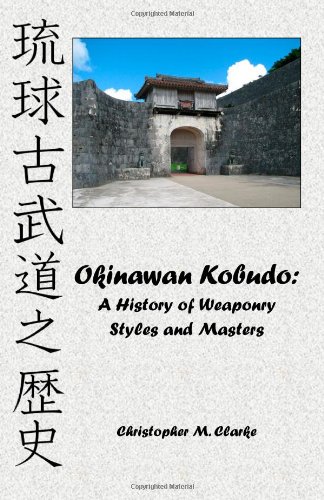 Now available. Papa Chris's latest books. "Okinawan Kobudo: A History of Weaponry Styles and Masters" is a comprehensive and complete book on the origins of the Okinawan kobudo (weaponry). It contains a description of the early history of weaponry in the Ryukyus; the relationship of kobudo to karate; and several myths and misunderstandings about Okinawan weaponry. In addition to profiles of nearly a dozen ancient kobudo masters, this book includes detailed histories and analysis of the major lineages/styles of Kobudo, including the Yabiku-Taira, Yamane, Matayoshi, Ufuchiku, and Motobu Udundi (Gotente) schools of kobudo. In each case, the book provides a history of the masters--from the founders to today's masters--analytical assessments of the style's characteristics, descriptions of their curricula, and lineage charts. It contains chapters on each of the weapons of Ryukyu kobudo, including extensive bibliographies on where to find more information about each. The book is lavishly illustrated with photos, art work, maps, tables and charts, including a detailed table of all the major recognized kata for each weapon in Ryukyu kobudo. Its footnotes provide access to a wide array of sources in English, French, German, Spanish, and Japanese--including available videos on the styles and masters--for those who wish to learn more. As the companion to the author's two volume, five-star rated "Okinawan Karate: A History of Styles and Masters," this book is an absolute "must-have" for all serious martial arts students. 392 pages. Amazon price $17.60. Available on Amazon.com (Beisho members, please note. Some of this material was included in the earlier "Beisho Members Only" book "Kobudo," but there are lots of new information and new illustrations in this edition.)
Now available. Papa Chris's latest books. "Okinawan Kobudo: A History of Weaponry Styles and Masters" is a comprehensive and complete book on the origins of the Okinawan kobudo (weaponry). It contains a description of the early history of weaponry in the Ryukyus; the relationship of kobudo to karate; and several myths and misunderstandings about Okinawan weaponry. In addition to profiles of nearly a dozen ancient kobudo masters, this book includes detailed histories and analysis of the major lineages/styles of Kobudo, including the Yabiku-Taira, Yamane, Matayoshi, Ufuchiku, and Motobu Udundi (Gotente) schools of kobudo. In each case, the book provides a history of the masters--from the founders to today's masters--analytical assessments of the style's characteristics, descriptions of their curricula, and lineage charts. It contains chapters on each of the weapons of Ryukyu kobudo, including extensive bibliographies on where to find more information about each. The book is lavishly illustrated with photos, art work, maps, tables and charts, including a detailed table of all the major recognized kata for each weapon in Ryukyu kobudo. Its footnotes provide access to a wide array of sources in English, French, German, Spanish, and Japanese--including available videos on the styles and masters--for those who wish to learn more. As the companion to the author's two volume, five-star rated "Okinawan Karate: A History of Styles and Masters," this book is an absolute "must-have" for all serious martial arts students. 392 pages. Amazon price $17.60. Available on Amazon.com (Beisho members, please note. Some of this material was included in the earlier "Beisho Members Only" book "Kobudo," but there are lots of new information and new illustrations in this edition.)
 Available to the public for the first time. "Ramblings from a Ten Foot Square Hut: Reflections After 50 Years in the Martial Arts." What is a "martial art"? Are we practicing an "art", which by definition is a means of self-expression without the need for any practical application or self-justification? Or are we practicing a "martial" discipline, something that requires effective training in combative technique, that prepares us to defend ourselves, perhaps even to take another person's life or lose our own in self-defense or in the effort to defend our loved ones or our principles? What relationship does our "modern" "martial art" bear to the old samurai way of life, the way of Bushido, the way of the warrior? What should we expect of our "martial arts"--and of ourselves? Related to this, how did we get from the highly practical original Okinawan "te" to the often stylized, unrealistic, and competitive "karatedo" we practice today? Does our modern karatedo provide realistic methods for confronting the kinds of self-defense and combative situations we face in the 21st century? If not, did something get lost in the transmission from the 17th and 18th century to the 21st? The popularization of Mixed Martial Arts (MMA) since the 1990s has reinforced this dilemma for practitioners of such "classical" martial arts as karatedo. Why do our traditional methods not prepare us for grappling or fighting from the floor? Why did classical karate practitioners keep losing to grapplers? Do we need to drop our traditional karatedo and take up MMA to find an effective self-defense or fighting system for the 21st century? These questions bedevil those of us who love and cling to our "traditional" martial arts. This books carefully examines how we arrived at this situation, how various experts have thought about it and attempted to find answers to our dilemma, and provides a sensible, workable set of principles that show that traditional martial arts are not obsolete, that they contain a wide range of effective combative strategies, tactics, and techniques that are just as usable today as they were when they were assembled into "kata", or forms for helping the student remember and practice realistic self-defense and combat while alone. For those wrestling with how to make their karate "work," this is a must-have book. Don't flounder or lose faith. And don't ignore the problem. Buy this book and start to discover your own answers to how to make your karate effective. 208 pages.
Available to the public for the first time. "Ramblings from a Ten Foot Square Hut: Reflections After 50 Years in the Martial Arts." What is a "martial art"? Are we practicing an "art", which by definition is a means of self-expression without the need for any practical application or self-justification? Or are we practicing a "martial" discipline, something that requires effective training in combative technique, that prepares us to defend ourselves, perhaps even to take another person's life or lose our own in self-defense or in the effort to defend our loved ones or our principles? What relationship does our "modern" "martial art" bear to the old samurai way of life, the way of Bushido, the way of the warrior? What should we expect of our "martial arts"--and of ourselves? Related to this, how did we get from the highly practical original Okinawan "te" to the often stylized, unrealistic, and competitive "karatedo" we practice today? Does our modern karatedo provide realistic methods for confronting the kinds of self-defense and combative situations we face in the 21st century? If not, did something get lost in the transmission from the 17th and 18th century to the 21st? The popularization of Mixed Martial Arts (MMA) since the 1990s has reinforced this dilemma for practitioners of such "classical" martial arts as karatedo. Why do our traditional methods not prepare us for grappling or fighting from the floor? Why did classical karate practitioners keep losing to grapplers? Do we need to drop our traditional karatedo and take up MMA to find an effective self-defense or fighting system for the 21st century? These questions bedevil those of us who love and cling to our "traditional" martial arts. This books carefully examines how we arrived at this situation, how various experts have thought about it and attempted to find answers to our dilemma, and provides a sensible, workable set of principles that show that traditional martial arts are not obsolete, that they contain a wide range of effective combative strategies, tactics, and techniques that are just as usable today as they were when they were assembled into "kata", or forms for helping the student remember and practice realistic self-defense and combat while alone. For those wrestling with how to make their karate "work," this is a must-have book. Don't flounder or lose faith. And don't ignore the problem. Buy this book and start to discover your own answers to how to make your karate effective. 208 pages.
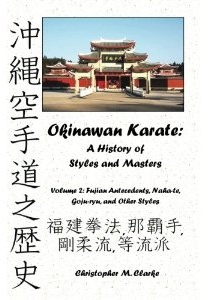 Beisho is proud to announce the publication of the second volume of Papa Chris's history of Okinawan karate. "Okinawan Karate: A History of Styles and Masters, Volume 2: Fujian Antecedents, Naha-te, Goju-ryu and Other Styles" is the most comprehensive and complete book available on the origins of the Okinawan karate styles that emerged from the Fujian Southern Shaolin boxing styles. It contains a thorough historical description of the Ryukyu kingdom's relations with both China and Japan; the background of the Fujian Southern Shaolin Temple and the various styles of Chinese martial arts that emerged from that lineage; the influence of Fujian boxing on the two great Naha-te styles of Goju-ryu and Uechi-ryu as well as the history of those styles and their major branches and masters; and the histories of Isshin-ryu, Kojo-ryu, Ryuei-ryu, and Motobu Udundi (Gotente). In each case, the book provides analytical assessments of the style's characteristics, descriptions of their curricula, and critical assessments of the accomplishments and controversies surrounding some of their great masters. This book is lavishly illustrated with photos, art work, maps, tables and charts, including a detailed description of the social and court ranks of the Ryukyu kingdom. Its footnotes provide access to a wide array of sources in English, Chinese, and Japanese--including available videos on the styles and masters, where available--for those who wish to learn more. As the companion to Volume One on Shuri-te and Shorin-ryu, this book is a "must-have" for all serious martial arts students." 390 pages, $19.95.
Click here to view on amazon: http://www.amazon.com/Okinawan-Karate-History-Antecedents-Goju-ryu/dp/147838316X/ref=sr_1_36?s=books&ie=UTF8&qid=1352828672&sr=1-36&keywords=Christopher+M+Clarke
Beisho is proud to announce the publication of the second volume of Papa Chris's history of Okinawan karate. "Okinawan Karate: A History of Styles and Masters, Volume 2: Fujian Antecedents, Naha-te, Goju-ryu and Other Styles" is the most comprehensive and complete book available on the origins of the Okinawan karate styles that emerged from the Fujian Southern Shaolin boxing styles. It contains a thorough historical description of the Ryukyu kingdom's relations with both China and Japan; the background of the Fujian Southern Shaolin Temple and the various styles of Chinese martial arts that emerged from that lineage; the influence of Fujian boxing on the two great Naha-te styles of Goju-ryu and Uechi-ryu as well as the history of those styles and their major branches and masters; and the histories of Isshin-ryu, Kojo-ryu, Ryuei-ryu, and Motobu Udundi (Gotente). In each case, the book provides analytical assessments of the style's characteristics, descriptions of their curricula, and critical assessments of the accomplishments and controversies surrounding some of their great masters. This book is lavishly illustrated with photos, art work, maps, tables and charts, including a detailed description of the social and court ranks of the Ryukyu kingdom. Its footnotes provide access to a wide array of sources in English, Chinese, and Japanese--including available videos on the styles and masters, where available--for those who wish to learn more. As the companion to Volume One on Shuri-te and Shorin-ryu, this book is a "must-have" for all serious martial arts students." 390 pages, $19.95.
Click here to view on amazon: http://www.amazon.com/Okinawan-Karate-History-Antecedents-Goju-ryu/dp/147838316X/ref=sr_1_36?s=books&ie=UTF8&qid=1352828672&sr=1-36&keywords=Christopher+M+Clarke
 Legendary boxing trainer, Emanuel Steward passed away on October 28 at age 68. A distinguished amateur boxer himself, Steward rose to fame as the trainer at the well-known Kronk gym, an old-style, seedy boxing school in Detroit that he turned into a stable of champions. Among those he coached to distinction and victory were a record 40 world champions, including Hilmer Kenty, Thomas Hearns, Waldamir Klitschko, Lennox Lewis, Mark Breland, Jimmy Paul, Michael Moorer, Julio Cesar Chavez, Oscar De La Hoya, Evander Holyfield, Michael McCallum, Gerald McClellan, Aaron Pryor, and Leon Spinks.
Legendary boxing trainer, Emanuel Steward passed away on October 28 at age 68. A distinguished amateur boxer himself, Steward rose to fame as the trainer at the well-known Kronk gym, an old-style, seedy boxing school in Detroit that he turned into a stable of champions. Among those he coached to distinction and victory were a record 40 world champions, including Hilmer Kenty, Thomas Hearns, Waldamir Klitschko, Lennox Lewis, Mark Breland, Jimmy Paul, Michael Moorer, Julio Cesar Chavez, Oscar De La Hoya, Evander Holyfield, Michael McCallum, Gerald McClellan, Aaron Pryor, and Leon Spinks. 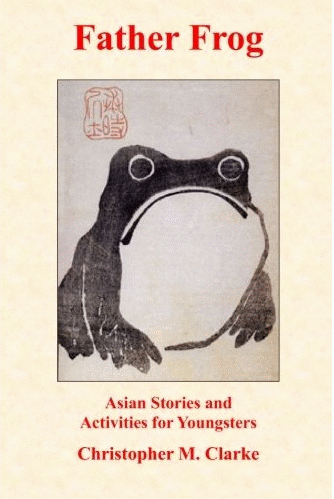
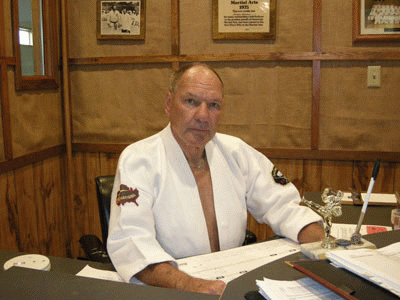 Long-time Fort Wayne martial arts competitor and instructor Parker Shelton died Friday morning at the age of 72. He had been battling lung cancer for several months. Besides being one of the top-ranked competitors in the world in judo and karate, Shelton also trained thousands of students. From 1972 to 1974 he was the nation's No. 1-ranked karate fighter and traveled to Europe and Japan and Korea for competitions. He also taught throughout the world after retiring as a fighter in 1978.
Long-time Fort Wayne martial arts competitor and instructor Parker Shelton died Friday morning at the age of 72. He had been battling lung cancer for several months. Besides being one of the top-ranked competitors in the world in judo and karate, Shelton also trained thousands of students. From 1972 to 1974 he was the nation's No. 1-ranked karate fighter and traveled to Europe and Japan and Korea for competitions. He also taught throughout the world after retiring as a fighter in 1978.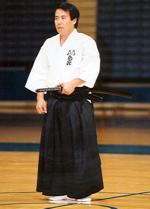
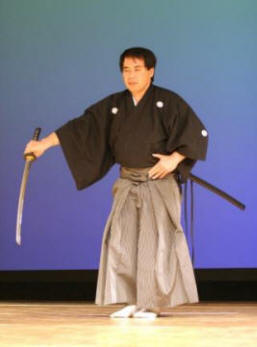
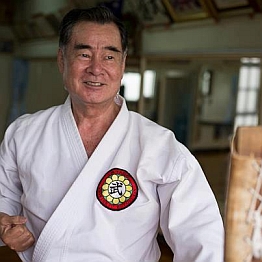

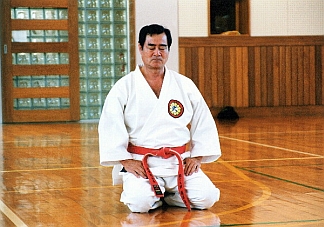
 "The Beisho Association is proud to announce publication of our newest book, Okinawan Karate: A History of Styles and Masters, Volume 1: Shuri-te and Shorin-ryu. Available through Amazon.com. Click here to review and order the book from Amazon.com If you like it, please leave a review. And I hope you do (like it, that is).
"The Beisho Association is proud to announce publication of our newest book, Okinawan Karate: A History of Styles and Masters, Volume 1: Shuri-te and Shorin-ryu. Available through Amazon.com. Click here to review and order the book from Amazon.com If you like it, please leave a review. And I hope you do (like it, that is). 
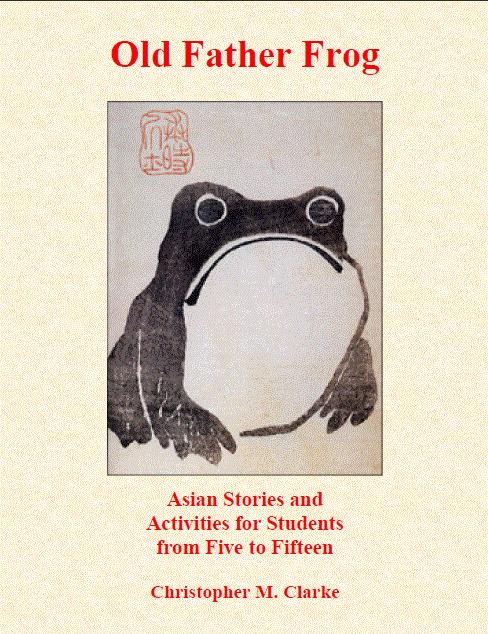

| The artwork is laser, into the stainless steel Size is 4-1/8" x 2-7/8" Artwork is 2" circle Signed and dated on the back There will be a limited amount available at Budo Camp Contact David Petrie at distinctivewoodworksohio@hotmail.com |
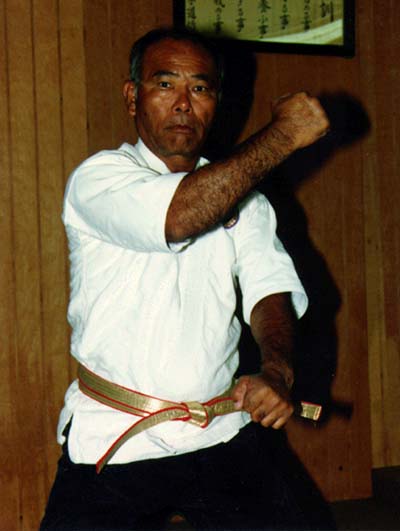

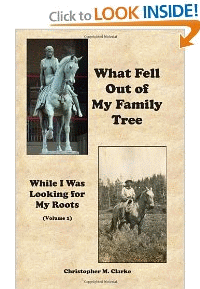 Papa Chris is proud to annouce the publication of his latest book, What Fell Out of My Family Tree While I Was Looking for My Roots. It consists of seven fascinating stories of ancestors spanning over 1000 years. They range from the true story of Lady Godiva and the Anglo-Saxon King Ethelred "The Unready" to the McFarlands who helped settle the West, and from Adeline "Addie" Atkinson who was a pioneer of women's rights in post-Civil War Virginia and who owned and operated one of Richmond's grandest and most important hotels to Sergeant Thomas Barber, who fought in the earliest war in North America, the Pequot War of 1637. The book also tells the story of the author's father, who was in charge of all entertainment for the tens of thousands of troops preparing for D-Day. He narrowly escaped the fate of hundreds of his fellow soldiers when he collapsed from overwork and was not shipped out with his comrades on the ill-fated U.S.S. Leopoldville, which was torpedoed on the way to Europe and sank with massive loss of life. What Fell Out of My Family Tree also contains the poignant story of Absalom Hissey, youngest son of a large family of average Americans, most of whose men served in the Union Army in the Civil War. Seriously wounded at Gettysburg, he was killed at the Battle of Kennesaw Mountain. It took nearly 150 years for a relative--the author--to visit and leave flowers at his grave. Enjoy these true stories. They may inspire you to look for your own roots. You'll be amazed at what you will find in your family tree! What Fell Out of My Family Tree While I Was Looking for My Roots is now available for sale through Amazon.com
Papa Chris is proud to annouce the publication of his latest book, What Fell Out of My Family Tree While I Was Looking for My Roots. It consists of seven fascinating stories of ancestors spanning over 1000 years. They range from the true story of Lady Godiva and the Anglo-Saxon King Ethelred "The Unready" to the McFarlands who helped settle the West, and from Adeline "Addie" Atkinson who was a pioneer of women's rights in post-Civil War Virginia and who owned and operated one of Richmond's grandest and most important hotels to Sergeant Thomas Barber, who fought in the earliest war in North America, the Pequot War of 1637. The book also tells the story of the author's father, who was in charge of all entertainment for the tens of thousands of troops preparing for D-Day. He narrowly escaped the fate of hundreds of his fellow soldiers when he collapsed from overwork and was not shipped out with his comrades on the ill-fated U.S.S. Leopoldville, which was torpedoed on the way to Europe and sank with massive loss of life. What Fell Out of My Family Tree also contains the poignant story of Absalom Hissey, youngest son of a large family of average Americans, most of whose men served in the Union Army in the Civil War. Seriously wounded at Gettysburg, he was killed at the Battle of Kennesaw Mountain. It took nearly 150 years for a relative--the author--to visit and leave flowers at his grave. Enjoy these true stories. They may inspire you to look for your own roots. You'll be amazed at what you will find in your family tree! What Fell Out of My Family Tree While I Was Looking for My Roots is now available for sale through Amazon.com 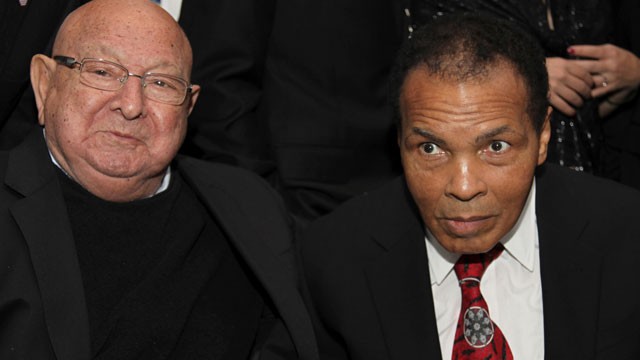
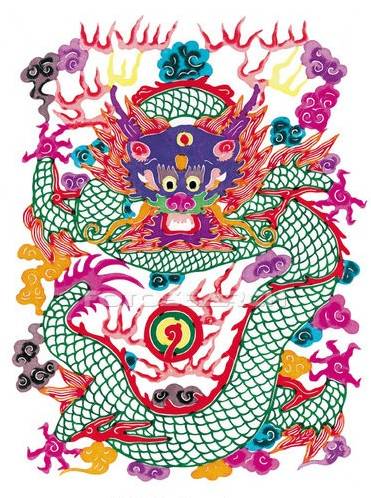
 . For more information on the Chinese zodiac, the meaning of the Dragon, and whether this is "your" year, see "The Chinese New Year of the Black Water Dragon" in the "Historical Writings" section or purchase Chasing Dragonflies, available under "Books," both on this website.
. For more information on the Chinese zodiac, the meaning of the Dragon, and whether this is "your" year, see "The Chinese New Year of the Black Water Dragon" in the "Historical Writings" section or purchase Chasing Dragonflies, available under "Books," both on this website.
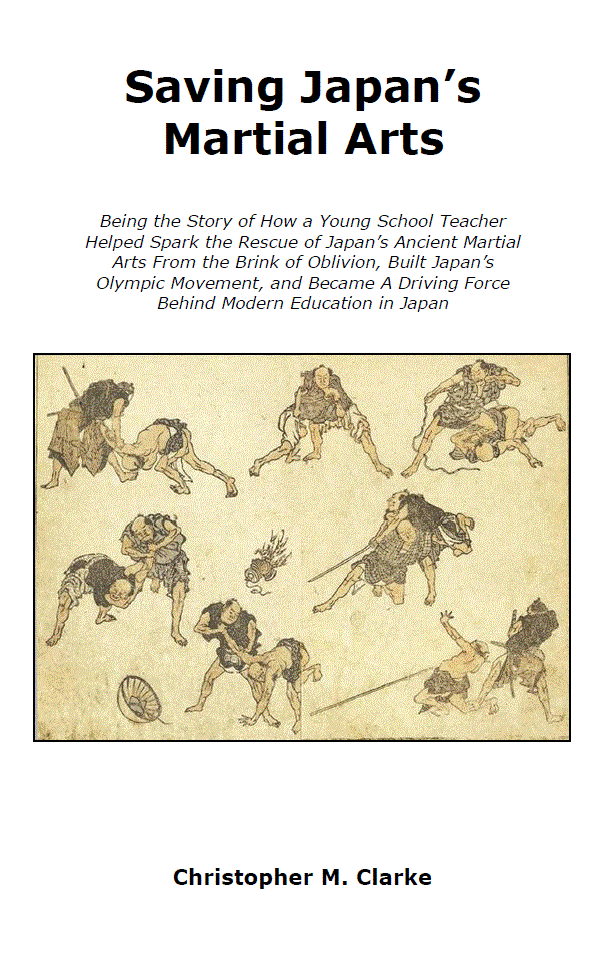 Saving Japan's Martial Arts is the story of how a young Japanese school teacher helped spark a martial arts revolution in Japan, rescue Japans ancient martial arts from the brink of oblivion, built Japans Olympic Movement, and became a driving force behind modern education in Japan. It is the only comprehensive biography in English of the remarkable Jigoro Kano (1860-1938), founder of Kodokan Judo. Saving Japan's Martial Arts also contains biographical sketches of more than a dozen top Judo students including Maeda Mitsyo, who taught Judo and Jujutsu to the Gracies in Brazil; Yamashita Yoshiaki, who taught President Theodore Roosevelt Judo in the White House; Shoriki Matsutaro, Judo master, founder of the Yomiuri media empire, creator of professional baseball in Japan, and Japan's first nuclear energy commissioner; and many others. Saving Japan's Martial Arts contains a detailed history of the bloody end of the Tokugawa shogunate, including the political struggles, assassinations and duels, and battles portrayed in the blockbuster 2003 Tom Cruise movie, The Last Samurai. Saving Japan's Martial Arts is chock-full of rare, vintage pictures and descriptions of the training and masters of the ancient Japanese martial arts. It should be required reading for anyone interested in the development of the Asian martial arts and for those who want to understand how those arts survived one of the most tumultuous centuries in Japanese history, a century that saw Japan emerge from an isolated and backward feudal autocracy to a modernized, industrialized major power."
Saving Japan's Martial Arts is the story of how a young Japanese school teacher helped spark a martial arts revolution in Japan, rescue Japans ancient martial arts from the brink of oblivion, built Japans Olympic Movement, and became a driving force behind modern education in Japan. It is the only comprehensive biography in English of the remarkable Jigoro Kano (1860-1938), founder of Kodokan Judo. Saving Japan's Martial Arts also contains biographical sketches of more than a dozen top Judo students including Maeda Mitsyo, who taught Judo and Jujutsu to the Gracies in Brazil; Yamashita Yoshiaki, who taught President Theodore Roosevelt Judo in the White House; Shoriki Matsutaro, Judo master, founder of the Yomiuri media empire, creator of professional baseball in Japan, and Japan's first nuclear energy commissioner; and many others. Saving Japan's Martial Arts contains a detailed history of the bloody end of the Tokugawa shogunate, including the political struggles, assassinations and duels, and battles portrayed in the blockbuster 2003 Tom Cruise movie, The Last Samurai. Saving Japan's Martial Arts is chock-full of rare, vintage pictures and descriptions of the training and masters of the ancient Japanese martial arts. It should be required reading for anyone interested in the development of the Asian martial arts and for those who want to understand how those arts survived one of the most tumultuous centuries in Japanese history, a century that saw Japan emerge from an isolated and backward feudal autocracy to a modernized, industrialized major power."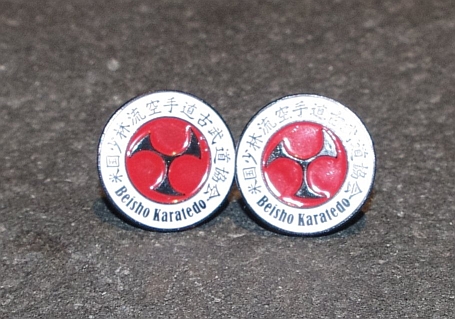
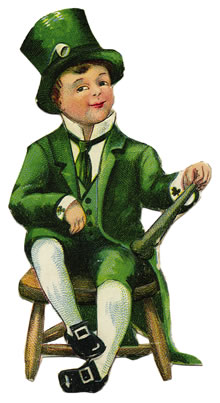
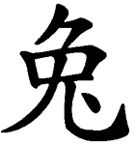
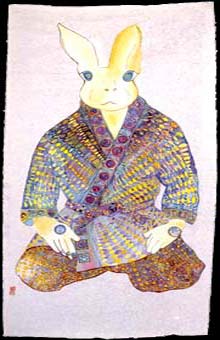
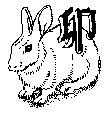

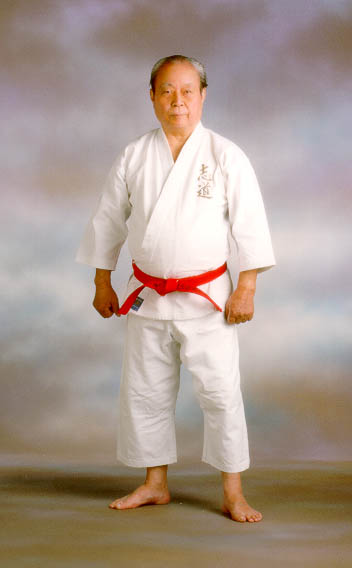 Designated as a Prefectural Intangible Cultural Asset of Okinawan Karate and Kobudo, Katsuya Miyahira died of heart failure at Naha hospital at 8:01 am on November 28 at the age of 92. He was originally from Nishihara Township. The funeral was held from 2:00 to 3:00 pm on November 30 at in Tenku 1192-1 Naha city at the Naha Funeral hall. He is survived by his wife Masae.
Designated as a Prefectural Intangible Cultural Asset of Okinawan Karate and Kobudo, Katsuya Miyahira died of heart failure at Naha hospital at 8:01 am on November 28 at the age of 92. He was originally from Nishihara Township. The funeral was held from 2:00 to 3:00 pm on November 30 at in Tenku 1192-1 Naha city at the Naha Funeral hall. He is survived by his wife Masae.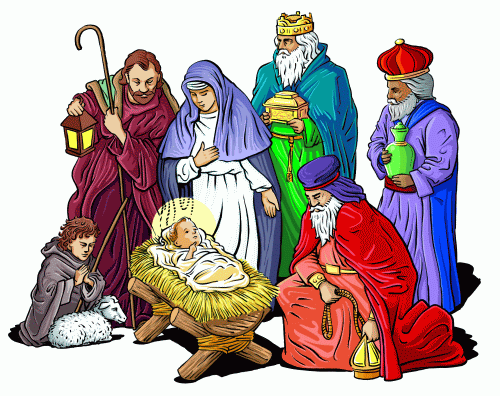
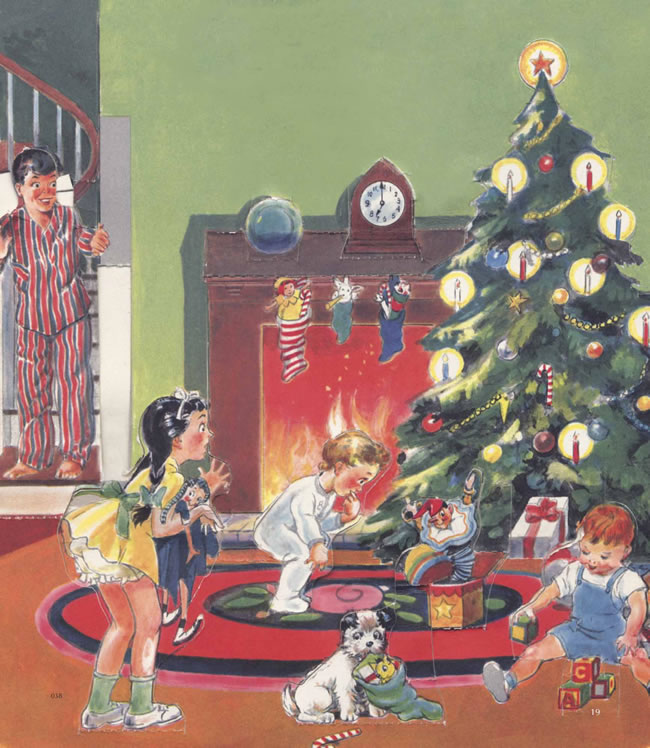
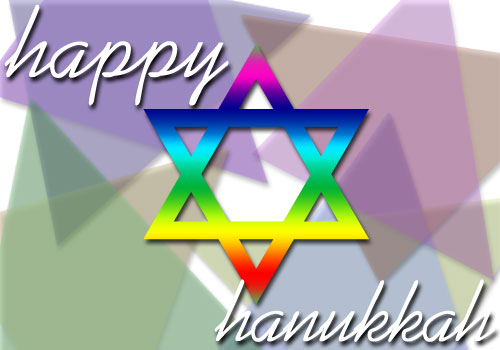
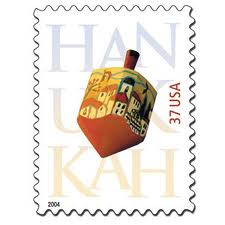

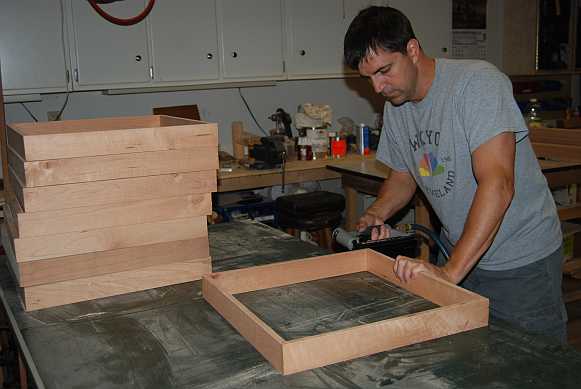


| Belt Rack Size: | |
| Overall: | 22" x 26½" |
| Box: | 18½" x 18½" |
| Squares: | 5½" x 5½" |
| Depth: | 2½" |
| · Hanging hook installed on back of each rack | |
| · All racks are numbered & dated | |
| · All solid cherry wood with two different color stains in stock | |
| · Cost: $85.00 plus shipping | |

